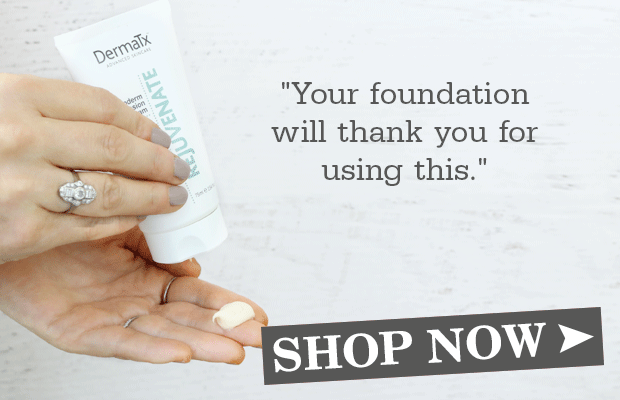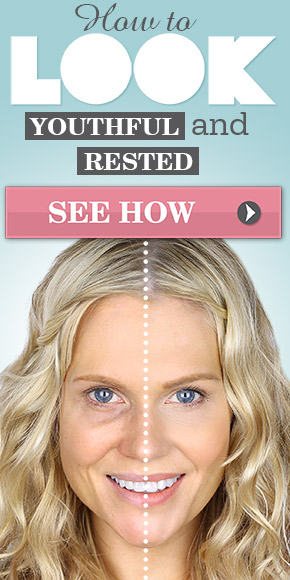-
Your Foundation Masterclass

Are you forever searching for your perfect foundation?
If you are, I’m here to help you in your quest! Your foundation soulmate – it’s out there, I promise! After reading my masterclass, you’ll feel much more knowledgeable to take on the task and dare I say it, it could even be fun!

I purposely won’t be recommending particular foundations, instead, I’ll be digging a little deeper and giving you the knowledge you need to be YOUR own expert when finding your perfect foundation match and how best to apply it!

Before you even begin to start choosing your foundation, you need to really know your skin.
You might think you know your skin type, but it really does change over time. It also depends on what your hormones are up to, what the weather’s like and what products you’re using. But there’s an easy way to find out your skin type today.
Discover your skin type:
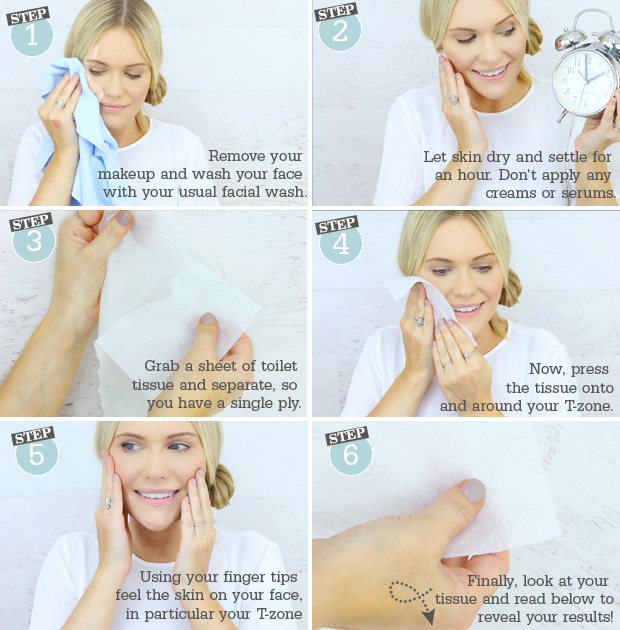
- If the tissue doesn’t show oil or skin flakes and your skin feels supple and smooth, you’ve got what the beauty industry refers to as ‘normal skin‘.
- If you’ve got oil on your tissue from most areas of your face and your skin feels dewy to the touch, you’ve got what the beauty industry refers to as ‘oily skin’.
- If your tissue has no oil, and skin feels and looks tight, you’ve got what the beauty industry refers to as ‘dry skin’.
- If you’ve got a mix of all three – usually an oily T-zone and normal to dry elsewhere – you’ve got what the beauty industry refers to as ‘combination skin’.

There are SO many finishes to choose from it can feel a little overwhelming, but don’t worry – my simple guide will help you choose the best finish for your skin!
Follow my simple guide:

What it is: Most matte foundations are oil-free foundations which give you a medium coverage with a smooth finish and no shine. Depending on how oily your skin is, the mattifying effect lasts for hours and generally, oil-free foundations stay on your skin for longer. To keep your finish matte and your foundation firmly on, sweep your oily day moisturiser aside and choose an oil-free one to wear underneath.
Who should wear a matte finish? Women with oily and combination skin (an oily t-zone and normal outer zone), would most likely love this finish. However, even women with drier skin can pull this look off with a good layer of moisture underneath.
Who should avoid a matte finish? Women with fine lines may wish to stay away because the finish may highlight these. Instead, women with fine lines may like to opt for a satin or dewy finish foundation.

What it is: A foundation in between dewy and matte that offers a soft, shimmery effect and not a glowing, luminous one.
What type of finish does it offer? Soft finishes with a slight glow and a sheer effect.
Who should wear a satin finish? All skin types look great with a satin finish. If you’re oily, the translucent powder that you’ll apply over a satin finish will help absorb excess oil while still offering a natural glow. If your skin is dry, skip the translucent powder.
Who should avoid a satin finish? No one, but if you don’t like wearing a medium to full coverage foundation, a satin finish may not be for you. Instead chose a sheer or dewy finish foundation.

What it is: A foundation with a glossy, youthful, glowy finish. It exudes a lot of radiance and adds a lot of moisture to the skin. It is also usually a medium to sheer coverage foundation.
What type of finish does it offer? Glossy, youthful and glowing.
Who should wear a dewy finish? Perfect for women with dry skin or skin that shows fine lines.
Who should avoid a dewy finish? Women with excess oil on their skin who like to wear translucent powder. Why? because wearing a translucent powder over a dewy finish foundation takes away the ‘glow’ and may make the dewy finish look cakey.
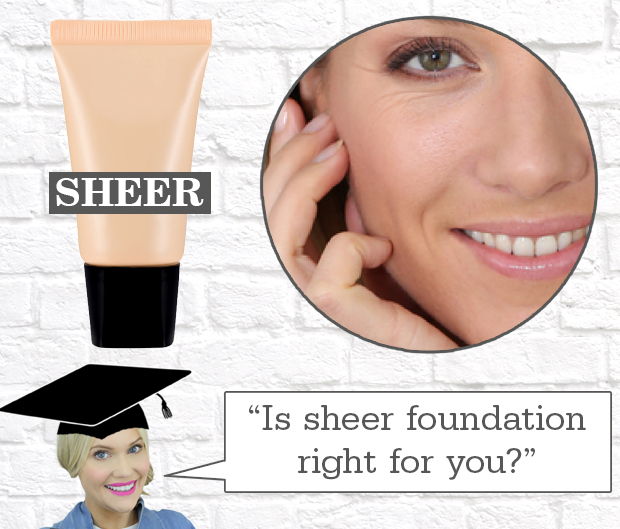
What is a sheer finish? The main things to know about sheer finish foundations is that they look natural on the skin and feel ultra lightweight. Designed to even out minor imperfections, sheer finish foundations allow your skin to shine through, enhancing your skin rather than masking it. Sheer finish foundations are more like moisturisers with just a teeny amount of coverage.
Who should wear a sheer finish? Sheer finish foundations can be worn by all skin types, however, they’re usually best suited to women who don’t like the look of foundation on their skin as they don’t offer too much coverage.
Who should avoid a sheer finish? All skin types can wear a sheer finish foundation, however, if you feel you have imperfections you’d like to conceal you may like to wear a little concealer in these particular areas to give a touch more coverage. Simply, apply the foundation first and then your fave concealer.

What is mineral foundation? Genuine 100% mineral foundation doesn’t include parabens, fragrance, talc, preservatives, oil, or other chemicals, making it ideal for sensitive or breakout-prone skin types that often become irritated with heavier formulas.
When choosing a mineral foundation, pay extra close attention to the ingredients list and opt for the version that reads less synthetic. True mineral foundations should include iron oxides, mica, and titanium dioxides among other elements, but any ingredients that seem to be derived from a paraben, glycerin, or alcohol aren’t the real deal.
Who should wear a mineral foundation? Pretty much every skin type works well with mineral foundations. In particular, women who have sensitive skin, eczema or acne prone skin and who are happy to have a semi-matte/matte finish to their skin with coverage that can be sheer and then built up in layers will love mineral foundation. It’s perfect for complexions that may need just a touch of coverage on some areas and then built up in layers to create more coverage in other areas.
Who shouldn’t wear mineral foundation? Skin types that are dry or flaky may find that the formulation gathers around dry, scaly patches of skin. To combat this; after moisturising as you normally would, squeeze a couple drops of Jojoba oil into the palm of your hand.
Dampen a beauty blender or makeup sponge with water and squeeze out the excess. Now tap the sponge into the oil in the palm of your hand. Next, dab the sponge on the flaky and dry skin areas. Continue on any dry areas that need a little extra love. Now apply foundation all over your face as usual. Easy!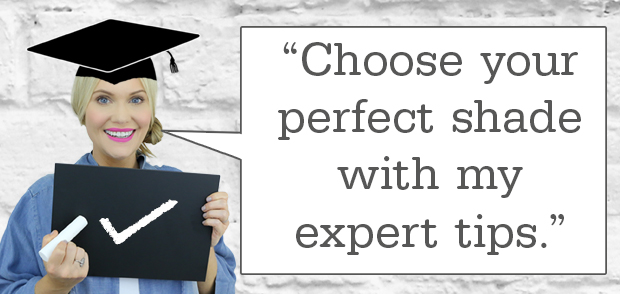
Now that you’ve found the finish you feel would work best with your skin type, it’s time for me to help you choose your perfect shade!

Always keep in mind the colour of your neck, decolletage, arms and hands when searching for your perfect foundation shade. If these areas of your body are much lighter than your face, split the difference and go for a foundation in between the colour of your face and these areas. This way, everything looks like it blends together seamlessly.


Our skin tone can change throughout the year. For example, you may find that while a shade works for you in the winter, you may need to change your shade in the summer.

Some people like to have a shade for their winter skin and a slightly warmer shade for their summer skin should they tan.
Alternatively, you may like to keep with just one shade and then on pop a little bronzer to warm up your skin tone. Click here > to watch my video on how to apply your bronzer like a pro!

When matching a shade to your skin tone for the first time, it’s always best to do this in natural daylight (without any artificial light). If you’re not near a window, go to your nearest window (or even better outside), and look at the shade in pure daylight or facing a window. If you’re inside a shop, apply a swipe across your jawline down to your neck – the perfect shade should disappear. Then pop outside with a hand mirror (carry one in your bag every time you go foundation shopping, it’s a little life-saver!) to see how the shade looks in natural daylight.

When shopping for foundation, be sure to bring makeup wipes with you. Remove the foundation from your jawline and swipe shades vertically across your jawline and neck. Leave the foundation for a few minutes as surprisingly a foundation can change shade on your skin within around 5 minutes due to your skin’s PH and oxidisation. Swipe the shades next to each other and after a few minutes, you’ll be able to see your best match. You’re seeking a shade that virtually disappears into your skin tone. If your face is a little darker than your neck or vice-versa, I recommend choosing a shade that’s in between both your face and your neck.
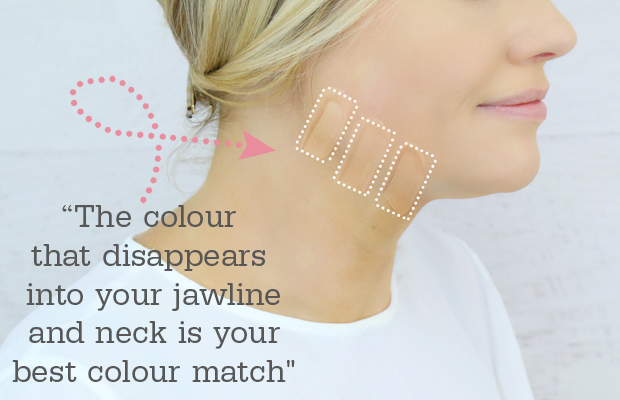

Some makeup brands split their foundation shades into cool tones, warm tones and neutral tones.
Generally, in the most basic form,
WARM tone foundations will look a little more golden in their tone.
COOL tone foundations will look a little more pink in their tone.
NEUTRAL tone foundations will look perfectly balanced between GOLDEN and PINK in their tone since being neutral they are the perfect balance between warm and cool.
You’ll know when you have the perfect tone for you as your skin will look like your skin and won’t look overly ashy, pinky or yellow!
Quick Heads Up: If you suffer from rosacea, warm tone foundations can help take down the look of redness in these problematic areas. Just blend a small amount of a warm toned foundation over the area you wish to take down the redness on (such as around the cheeks and nose) and then apply your regular foundation over the top!

Sometimes you can have the perfect foundation but aren’t applying it in the best way! There’s no right or wrong way to apply makeup, only the way which feels and works best for you. I hope these tips can help with that:
There’s no right or wrong way to apply makeup, only the way which feels and works best for you. I hope these tips can help with that:
I hope these tips can help with that:

Is your foundation creasing in fine lines? Fear not – I have the perfect tip for you. Discover how Jojoba oil can instantly fix and smooth the look of foundation and concealer creasing! Click here > to watch how

Liquid and cream foundations can be thinned with moisturiser to sheer out coverage for days when you just wish for a touch of coverage!
Make your own tinted moisturiser/BB cream by adding a few drops of your favourite liquid foundation with your facial moisturiser.

Fingers tend to warm up a foundation formulation nicely and make it easier to blend; they can also feel more intuitive when applying.
Fingers can also give slightly heavier coverage since there are no bristles to buff and thin the product out.
If you’d like to have a more sheer coverage, try using a foundation stippling brush such as the brush below – it gives the most beautiful, natural finish!

Had a recent outbreak of spots? It could be that you need to wash your foundation brush and makeup facial sponges! Dirty brushes and sponges can become clogged up with product and facial oil, creating a great breeding ground for bacteria and these can easily cause breakouts.


If you suffer from dark circles, try applying a couple of layers of foundation under your eyes first, then apply your concealer. This will help provide extra coverage and you may find you need less concealer.

When applying foundation, start from the centre of your face and work outward. This leaves you with the most natural finish, and helps prevents foundation being visible around the perimeter of your face.

Apply your foundation with downward strokes to avoid highlighting the fine, fuzzy hair we all have on our faces (particularly around the edges of our faces). Since the hair grows downwards, by applying foundation in a downward motion this will help keep the hair looking smooth and undetectable.

Don’t forget to apply foundation over your eyelids to reduce redness. Doing so instantly brightens the eye as well as making a perfect base for your eye makeup – helping to keep eyeshadow on for longer! Just be sure to press a little translucent powder over the top of your foundation (before you apply any eyeshadow) to help the foundation stay in place and not crease in your eye socket!

For the most natural foundation application results, always (if you can) apply your foundation facing natural daylight. If you don’t have a window (or good natural light) near you, try to apply in the brightest possible light available to you at the time, always facing towards the light.

If you want to turn your liquid foundation into a dewy one, place a little of your foundation on the back of your hand. Now add 1 to 3 drops of Jojoba oil, mix together on the back of your hand and apply to your face. One drop will give a subtle amount of dewiness, 3 drops will give you a super dewy glow! Experiment until you find your perfect dewy ratio!


For a: “No, I’m not wearing foundation (wink, wink!)” look, after applying your foundation, give it a quick buff with this game-changing brush below…


Primer is a must if you want your foundation to last a little longer through the day.
Why? Because, a great primer seals in your moisturiser and provides a smooth, even surface for all your foundation. It acts as a layer between your makeup and your skin, so it stops makeup from being absorbed into the skin, giving it much better staying power.

Smooth skin makes an incredible difference – not only to how long your makeup lasts, but also how foundation sits and looks on your skin.
There’s a brilliantly quick way to smooth skin and that’s exfoliation! I like to go one step further and use an at-home microdermabrasion facial called DermaTX. Not only will makeup sit better and last longer, it’ll look smoother and like it’s professionally applied.Microdermabrasion removes dull and dead skin cells that can stop your face creams and serum from penetrating the skin, so you’ll also be giving your skincare routine a chance to work its magic! AND with regular use, you’ll notice your pores will start to look smaller and more refined. It’s a win-win-win! Take a peek by clicking here.

Of course, you want your skin to be beautifully moisturised through the day, but did you know that your daytime facial moisturiser might be the culprit behind your makeup disappearing soon after you’ve applied it?
Day moisturisers containing lots of oil can speed up how quickly makeup breaks down after it’s been applied. So, if you find your makeup slipping off your face after an hour or so, it could be the oil in your day-time moisturiser.
Don’t worry, you don’t have to give up your favourite oil-based cream – just keep it for night time (and choose a day cream that’s water-based to wear under your makeup). OR after application of your oil-based moisturiser, dust your face with a little translucent powder and then apply your foundation.

Using a translucent powder can really help keep foundation on for longer! I like to dust my face with a little translucent powder before applying my foundation as it helps soak up any oil or moisture that my skin hasn’t drunk-up from my skincare, then I’ll apply my foundation. If you like to wear a translucent powder over your foundation, try to apply it just to the T-zone on the face and allow the cheeks to be powder free, so they keep their luminosity from your skin’s natural oils for a natural glowey sheen! If you have particularly oily skin and find your foundation to be slipping, then, throughout the day, use blotting papers to minimise shine, rather than applying more powder to avoid caking and to give a more natural look.
If you have particularly oily skin and find your foundation to be slipping, then, throughout the day, use blotting papers to minimise shine, rather than applying more powder to avoid caking and to give a more natural look.
Watch my next MASTERCLASS!
Now that you know how to find your perfect foundation, discover how to apply your ALL your makeup with my ‘Ultimate Guide to Makeup Brushes’! I teach you how to use brushes to get a makeup artist finish every time you apply your makeup.

I hope, I’ve given you the confidence to be your very own foundation expert the next time you shop for foundation!
Love,

Makeup Artist | Stylist | Founder of Beautyandtheboutique.com


















































